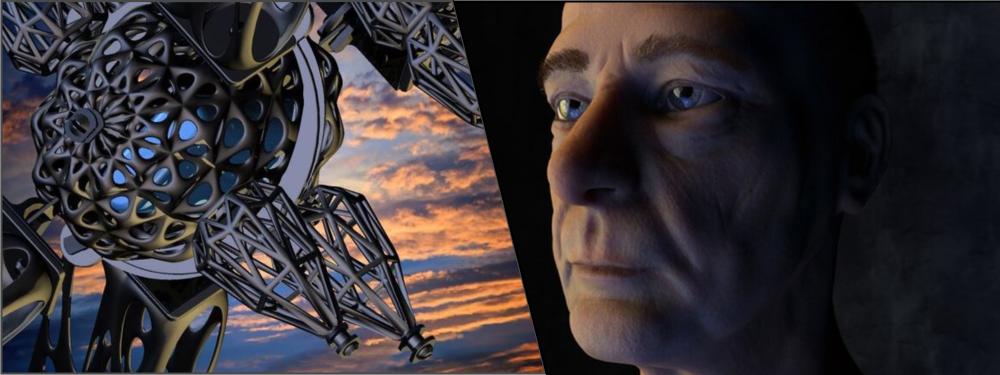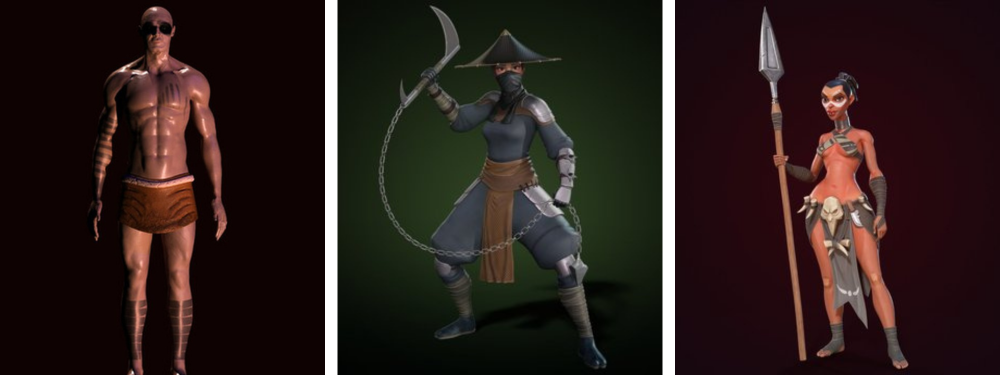Have you ever wondered how the characters in your favorite video games feel and look so real? How do cartoon films capture the attention of young and old audiences alike? — These incredible works of art are the masterpiece of professional 3D artists, specifically with the so-called 3D rigging design animation’s help.
If your company has a digital media project underway and wants to make it look and feel authentic from your competition, now is the perfect time to take advantage of professional 3D rigging design and animation services with 3D model 3D rigging capabilities. This article will shed light on these services to help you discover their role in your company’s projects:
 Table of Contents
Table of Contents
What are 3D rigging design animations and 3D model 3D rigging services, and why do you need them?
3D rigging design animation is a technique that allows 3D characters to have natural movements and interact within the digital environment. Every time a 3D animation 3D rigging designer develops a character, 3D rigging, and 3D modeling are two equally important processes that go hand in hand.
With specialized software, animators create the basic skeleton of a model, defining its range of movement for different scenarios. 3D rigging is vital in character animation for animations and video games, enabling efficient production and control over 3D objects. Rigging is an essential stage in the animation pipeline, allowing complex and adaptable animations.
Digital 3D animation software facilitates bone placement, scale, and rotation adjustments during rigging. Each bone in the skeleton has specific limitations and capabilities, influencing the movements and interactions with other bones, enhanced through master bones and weighted controls.
3D animation 3D rigging is an extraordinary method used by freelance 3D artists. Unlike other forms of animation, such as a flip book or frame-by-frame animation, 3D rigging doesn’t only offer complete control over a model and allows better flexibility.
A 3D animation rigging designer creates realistic character movements using puppetry-like controls in specific projects like cartoons or commercial videos. This enhances immersion by avoiding robotic motions. Gaming projects benefit from advanced 3D rigging and animation tools that offer greater character autonomy.

RELATED: What are 3D product animation costs, design service rates & pricing for companies?
What is a 3D rigger?
A 3D rigger creates digital skeletons for 3D CG or computer-generated characters, often with the help of computer-generated imagery (CGI) experts. These skeletons, known as rigs, are similar to puppets that define a creature or character’s movement, like how a woman raises her eyebrows, how the mouth and face of a person move when singing, or how a dog runs. Animators use these as the basis for the movement of characters.
The 3D rigger begins with a static pose of a 3D model made by the modeler, followed by developing the motion network for this 3D character. If the 3D character is singing, they will make bindings for the mouth, eyes, tongue, abdomen, arms, and ears, and how these different parts move.
The animator will test the right and give feedback to the 3D rigger. The 3D rigger will then complete any improvement or fix being requested. The process will continue until the animator and 3D rigger are satisfied with the 3D puppet or assembled model. Although 3D riggers often work with the characters, they can also develop assemblies for other elements that move in the animation. 3D riggers can also be a part of an animation studio or work as freelancers.
Critical steps for 3D model rigging
To make it easier to understand, the following are the four significant steps that make up the 3D rigging process:
1. Skinning
The initial step in the 3D rigging process is skinning or meshing, which involves creating bone structures representing the model’s skeletons. During the 3D rigging process, the development and setup of joints and bones are crucial for creating an armature that serves as the model’s skeletal structure. Character rigging and animation experts can assist in the process.
These joints and bones are meticulously crafted to provide the necessary design and articulation for the model. They act as the framework on which the model’s movements and deformations will be based. Once the bones are established, they are connected or joined with the model’s skin or mesh. This process forms the foundation for the rigging process, allowing for the manipulation and control of the model’s movements.
2. Building controllers
The second step in the process is building controllers. These represent different geometrical forms that will control the effects of each aspect of the movement of the model and assist the animators in getting a better understanding of the role of the controllers.
Some of these shapes are the following:
- A diamond is used to rotate and translate the model. The shape is used for the figure’s central parts, hands, and feet.
- The cube is used for translating controls.
- The sphere allows rotation and is generally used for the neck, torso, and pelvis.
- Trapezoids are used on the joints, with the knees and elbows being the most frequently used joints.
The skeleton design process is now complete. The 3D rigger of the character will now insert facial expressions and movement patterns into the model. Every connection of the movements between the bones is hierarchical such as a child and parent.
A character’s forearm and hand bones in a 3D model move as one with the shoulder. Since the character 3D rigger doesn’t have to define the actions for each model component, 3D rigging can be easily solved with the help of this relationship.
3. Weight painting
The next step involves joints different from the ones mentioned in the first step, and the joints limit the ability of the model to move around. Weight painting is one critical factor in the procedure, and the weight scale reveals how every component of the 3D model is connected to the rest. The 3D model’s natural and physiologic 3D rigging depends on how much a part’s weight affects a bone while moving.
4. Inverse and forward kinematics
Inverse and Forward Kinematics are involved in the fourth step. Hierarchical relationships, as stated earlier, exist between the bones. The term forward kinematics refers to the concept that movement in the upper parts of a model affects its lower parts. Conversely, inverse kinematics pertains to the separate animation of the lower legs from the upper legs. The process of 3D animation services is often more straightforward with inverse kinematics.

RELATED: What is 3D rigging and how is it used for 3D character animation?
Different uses and applications of 3D rigging
3D rigging is used to animate characters in TV shows, movies, and video games. A skeletal animation can also animate mechanical objects like doors and springs after a rig is assigned to the 3D model. It is also possible to simulate the different skeletal structures often done by motion simulation experts. The computer applies physics to the bones in the rig, with the outcome recorded over a series of frames. It is ideal for virtual stunts and ragdoll physics.
Virtual anatomy simulations have applications beyond entertainment and arts. Education and medical industries benefit from visual demonstrations and teaching. Quality facial animations often require complex rigs, with dedicated projects for rigging the character’s face. Methods like blending shapes or morph targets are recommended for non-conventional bone structures to rig a character’s face.
3D rigging offers more straightforward control over character deformation, simplifying animation. However, it may not be ideal for animating surface details, and complex projects can be time-consuming. Rigs are helpful for animating hard-bodied objects, employing control nulls, and object parenting. Joints are less common in hard-bodied rigs. Examples include precise automobile rigs that spin wheels and provide steering control. The complexity of these rigs depends on shot requirements.
The bottom line
Similar to other techniques in the CGI process, beginners may find the 3D rigging process challenging. However, by leveraging expert 3D rigging design & animation services, companies can simplify the process and enjoy its benefits. Working with a CAD services firm and 3D animators can help utilize 3D model rigging can provide valuable support and expertise, making the 3D rigging design process more accessible and efficient for companies.
How Cad Crowd can assist
Our team of skilled 3D rigging experts is ready to bring life and fluidity to your projects. Discover the benefits of professional 3D rigging services and get a free quote today. Take your animations to the next level with Cad Crowd!
